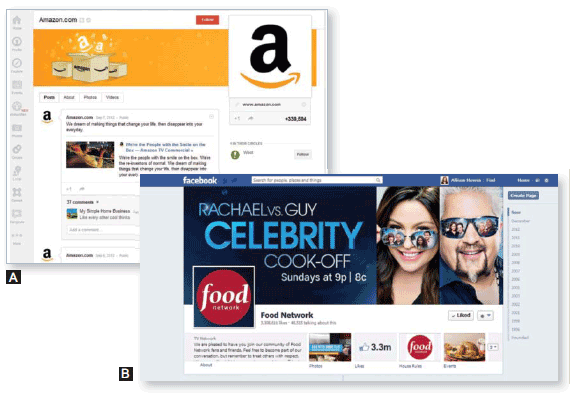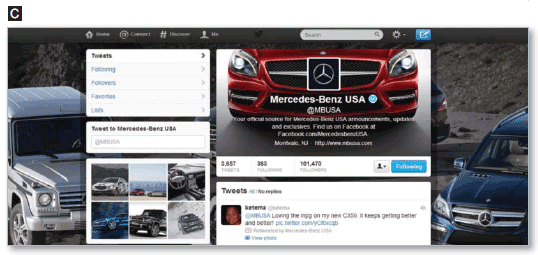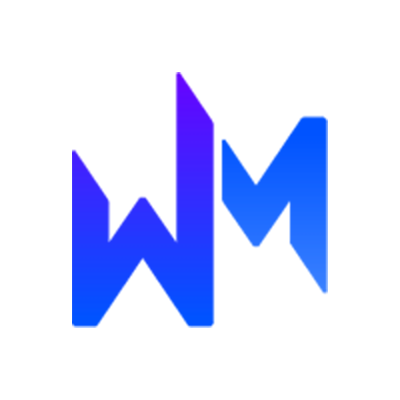Design for the Big 3 Social Networks in 2013

In this very column in the March 2012 issue of Website Magazine, an article was published that highlighted one example of a popular brand page from each of the "Big 3" social networks: Facebook, Google+ and Twitter.
Since all three of these networks underwent massive design changes in the last 12 months, now is a great time to revisit what it takes to design a compelling profile on these social media sites.
Google+ (Amazon)
When we last left Google+, the site used a very clean, whitespace-heavy design for its pages. A brand's primary profile image appeared in the upper left-hand corner of the page. Header images consisted of either five different image fields or the flexibility of stretching one image across all five boxes. The profile's wall was just below that.
Now the site completely changed its look, moving the profile photo to the right side slightly overlapping the new header image that runs the length of the profile's wall. For a great example of how to pull off this new look, we turn to Amazon (see image A).
Amazon uses the large space provided for their profile photo to include a simple, abbreviated version of its logo featuring the company's famous font and smiling arrow. For the cover photo, the company employs an eye-catching image with a bright yellow-orange background (for brand recognition) and a picture that takes up approximately the left third of the space. This is an ideal design because it is clutter-free (a big problem with many G+ cover photos), while being visually stimulating and instantly inciting brand recognition.

Facebook (Food Network)
Facebook's new Timeline layout rocked the 'Net in 2012, as it completely changed how Brand Pages looked and performed. In fact, studies show that the Timeline layout helps brands drive higher-engagement metrics.
Better performance is likely due to the new design's emphasis on highly visual content and the additional control it gives managers over profile content.
The biggest change that Timeline brought to Brand Pages is the cover photo, which allows brands to feature an 851 pixels-wide by 315 pixels-tall image on the top of their profile. This image can promote a brand while grabbing a visitor's attention. The Food Network, for example, often uses its cover photo space to promote new television shows, such as, "Rachel vs. Guy Celebrity Cook-Off." The straightforward cover photo immediately captures a visitor's attention and the text on the image provides visitors with programming information (see image B).
Aside from the bold new cover photo, Timeline also gives Page managers the ability to customize their app section, pin posts to the top of their Pages and highlight content. Typically, brands will want to customize the app section to feature apps that can help them reach more customers or expand their brand, such as email sign-up, ecommerce or event apps. Additionally, by pinning posts or highlighting content, Page managers have the ability to feature important content more effectively.
Twitter (Mercedes)
Following in the footsteps of the recent image-driven redesigns of Google+ and Facebook, Twitter also announced a change to its layout that allows users to create custom header images for their profiles.
The new update eliminates the banner image that brands previously used for promotions or additional branding. Instead, the update enables users to upload a 520 pixels-wide by 260 pixels-tall image featured atop a user's profile. Choose these images carefully, because the header also features the user's profile picture, name, Twitter handle and description information (in white writing) directly in the middle of the image.
One of the most creative header images comes from Mercedes-Benz USA, which displays the front end of a car so that the company's profile image (a Mercedes symbol) resides in the center of the vehicle's grill (see image C). Furthermore, the image doesn't distract from the description text and also provides a dark enough background so that the white words are readable.
A Constant Evolution
All three social networks completely overhauled their profile designs during the course of 2012, and they likely will again (many times) in the future. Since social media is a major factor in an online brand's success, you owe it to yourself and your business to keep up with these changes, big and small, to optimize the design of your various social media profiles.


Subscribe to Our Newsletter!
Latest in Social Media










